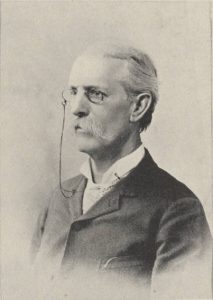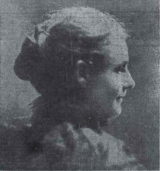
Photo info ...
Credit: Public domain via Wikimedia CommonsView Source
(Oct. 22, 1833-Oct. 8, 1919). Born in Henry County, Indiana, Abraham Crum Shortridge spent his teen years in farming, learning to be a printer, and attending a country school. After a few months of additional study at Fairview Academy in Rush County, Shortridge taught at schools in Wayne County. His formal education ended with a brief stint as a student at Greenmount College near Richmond. Between 1855 and 1861, he was on the staff of Whitewater College in Centerville, much of this time in the capacity of school manager.

Shortridge moved to Indianapolis in 1861 to teach in the preparatory department of North Western Christian University (later ). Two years later, he became superintendent of the , which were coming out of a period of decline. In 1858, the Indiana Supreme Court had ruled against towns collecting taxes to pay for school tuition, which resulted in the severe curtailment of classes and the closing of the high school in Indianapolis. When Shortridge became superintendent in 1863, the school system was beginning to receive increased funds as the state Supreme Court now allowed additional taxation. Shortridge was thus able to expand educational facilities and offerings substantially as well as to increase enrollments.
Among his major contributions was the reopening in 1864 of the high school in Indianapolis. Shortridge also introduced a graded system, a reform increasingly common in urban areas, and he lengthened the school year from three and one-half months to nine months. Under his superintendency, school buildings, modeled on the design of a three-story Boston, Massachusetts, school, were constructed in two Indianapolis wards. Shortridge was instrumental in establishing the and in reopening Indianapolis’ public schools to Black children. He was, in brief, a major figure in shaping education in early Indianapolis.

Following his suggestion, the school board hired a predominantly female teaching force in Indianapolis. In Shortridge’s view, low salaries made it necessary to turn to women to fill the expanding number of teaching positions. In order to train these women, Shortridge organized a teachers’ training school in Indianapolis that opened on March 1, 1867. He also named a young woman, , as supervisor of primary instruction for the city.
Shortridge resigned from the superintendency in 1874 to serve briefly as president of Purdue University, where he helped get the university’s first regular classes underway. At odds with the school’s benefactor, John Purdue, and suffering from poor health, Shortridge left the university at the end of 1875. Thereafter, he was occupied with farming just east of the Indianapolis suburb of and served as justice of the peace. However, a brief note in the mentioning him as part-owner of a private academy in 1882 offers evidence that his interest in education continued. In 1897, Indianapolis High School was renamed in his honor.
Throughout the last 20 years of his life, Shortridge was completely blind, and, in 1906, he was forced to have part of his leg amputated after being hit by an interurban. The degree of hardship that he suffered during his lifetime makes his achievements in the field of education all the more remarkable. He is buried at Crown Hill Cemetery. His gravestone identifies him as “Abram” C. Shortridge, rather than “Abraham,” likely due to his second wife not knowing the family’s history.

Help improve this entry
Contribute information, offer corrections, suggest images.
You can also recommend new entries related to this topic.